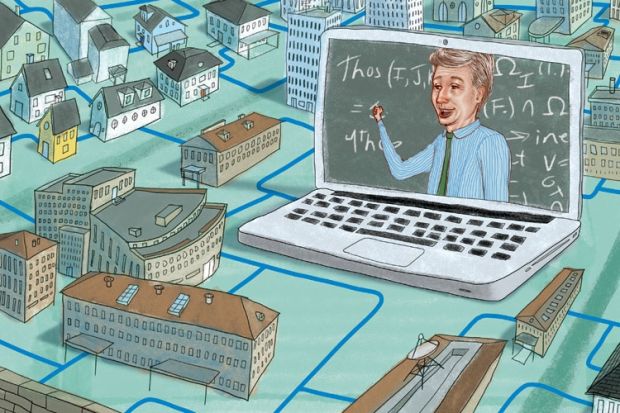Survival is not mandatory” – W. Edwards Deming’s famous line – is as true now as it was when the renowned statistician first said it decades ago, and it applies to universities as much as to businesses.
With the traditional lecture model unravelling, government support evaporating and global competition intensifying, universities everywhere need to rethink and clearly articulate an individual approach.
When I arrived at the University of Adelaide a year ago, it was in the final phase of a five-year strategic plan which, like those of many Australian universities, envisioned a climb up the research rankings funded by rapid growth – especially mass recruitment of international students. As a result, Adelaide had doubled in size in 10 years. But with stagnant school-leaver numbers and international recruitment being hampered by the strong Australian dollar, such growth could not be sustained.
Then there was the national problem of declining student satisfaction resulting from student-to-staff ratios hitting 20:1 and first-year lectures that can include more than 1,000 students.
I was also concerned about the effects of ever higher university participation on quality. Even Australia’s new higher education minister, Kim Carr, recently suggested that the Labor government’s launch of a demand-driven system in 2012 might have damaged quality, so I may not be alone in believing it is time to draw a line in the sand on expansion.
Adelaide’s new strategic plan, Beacon of Enlightenment, aims instead to attract the best students by returning to Wilhelm von Humboldt’s 19th-century ideal of the university, which puts research at the heart of the undergraduate curriculum, and delivers teaching largely through seminars, not lectures.
To that end, we are pledging that teaching in every year of every course from 2014 onwards will be centred on small groups, facilitating open-ended collaboration between teacher and students. This will allow the latter to gain the skills in analysis, criticism and independent problem-solving that employers tell us they need. An increased emphasis on work experience and study abroad will also bolster student employability.
The union is concerned that teaching small groups might increase academics’ workloads, but all that will change is how they use their time
Meanwhile, our highest-achieving undergraduates with the potential to go on to research careers will be offered “advanced bachelor” programmes that feature independent research from the outset.
When drawing up the plan, the immediate question was how, with a static budget and no additional staff, academics would find time to teach larger numbers of small groups. Our solution is to confine lectures to the beginning and end of semesters; lecturers will put much of the rest of their content online as segments and quizzes.
This will require us to treble our expenditure on information technology and e-learning resources, but I believe many students will embrace the chance to view lecture material at their leisure, go over things they don’t understand and bring any remaining problems to the small groups. The large proportion of students who hold down jobs will also appreciate the opportunity to attend classes later than the traditional 5pm shutdown: an innovation that will boost the number of teaching rooms at our disposal by nearly 50 per cent.
Our staff have reacted with enthusiasm to the plans, unanimously endorsing them at meetings of the academic board and the governing council at the end of last year. We have launched a programme of workshops to develop their skills in small group teaching and have recently been showcasing examples of best practice. All faculties have developed new first-year teaching plans: some have devised fresh modules, while others have worked new elements into existing courses.
Negotiations are under way with Australia’s main academic union, the National Tertiary Education Union, for a fresh agreement on employment conditions (known in Australia as an “enterprise agreement”). The NTEU is understandably concerned that the requirement to teach small groups might increase academics’ workloads, but all that will change is how they use their time.
At the union’s first national conference on teaching in April, I introduced the concept of a newly flexible workload allocation, in which academics could negotiate how they divide their time between research, teaching and administration individually with their supervisor each year, according to their own interests and the department’s needs. Rather than being rigidly categorised, the amount of time spent on teaching might wax and wane during the course of an academic’s career.
It was a rare thing for a vice-chancellor to present the opening paper at a union conference: a case of Daniel invited into the lion’s den. But I was not torn to pieces and remain hopeful that Australian academics and their students are ready to embrace such flexibility and the bold new vision of undergraduate education it will allow.
Register to continue
Why register?
- Registration is free and only takes a moment
- Once registered, you can read 3 articles a month
- Sign up for our newsletter
Subscribe
Or subscribe for unlimited access to:
- Unlimited access to news, views, insights & reviews
- Digital editions
- Digital access to THE’s university and college rankings analysis
Already registered or a current subscriber? Login
